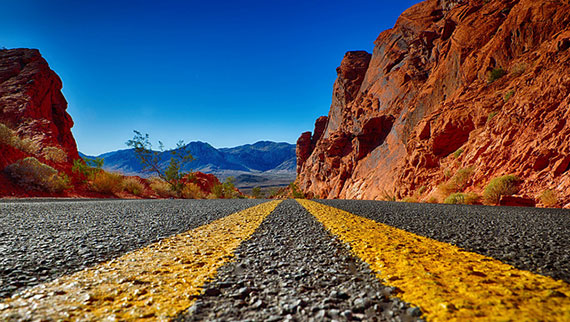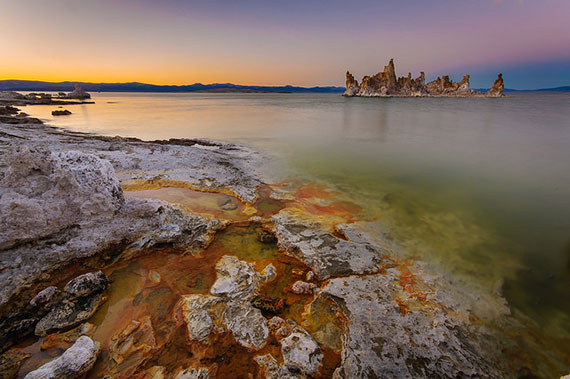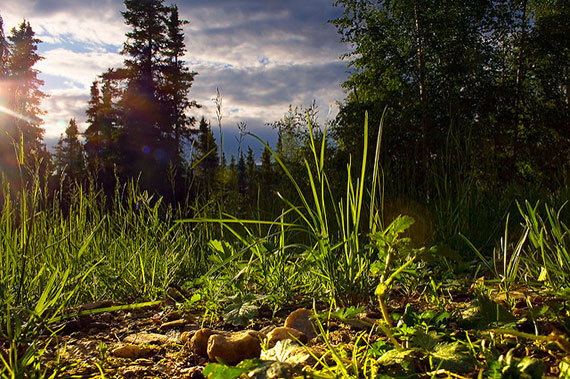It seems as if everyone is trying to be a landscape photographer these days. With the advent of digital imaging and the corresponding ease in cranking out pictures, photography is everywhere. Because of this, it’s getting harder and harder to create landscape images that are different and not the same old stereotypical stuff that everyone else is shooting.

Photo by Mike Boening Photography; ISO 100, f/22.0.
Many photographers go to great lengths to put their own creative stamp on their work, using such things as camera filters or complex computer editing techniques to gain a unique style. These are all well and good, but it’s often amazing how much difference there can be in a photograph by getting a different perspective with a lower camera angle.
Humans are very much creatures of habit. If we have a camera in our hands and we see a pleasing scene, we raise the camera to our eye, compose, and shoot. If we’re using a tripod, we extend the legs to eye level and shoot the picture. Well it’s time to break the old habits.
The next time you’re out doing landscape photography, try simply dropping to one knee in order to incorporate, and put more emphasis on, interesting foreground elements. If you’re using a tripod, try not extending the legs in order to keep the camera closer to the ground. You might be surprised at the difference this simple little step will make.

Photo by Bill Richards; ISO 100, f/18.0, 1.6-second exposure.
Now that you’re getting the idea, take it a step further and try some shots lying flat on the ground. Now you’re getting some perspectives that are different than the majority of the casual snapshot shooters out there. Things like rocks, flowers, logs, and even blades of grass are examples of objects that can be incorporated into the image to make it more interesting. Obviously the scene and the foreground elements will dictate how low to go. Experiment and have fun. That’s the whole idea, isn’t it?
As you incorporate more foreground elements into a scene by using this technique, depth of field, also known as depth of focus, will become an issue. It can be difficult to keep both nearby objects and the distant landscape in focus. Use as small an aperture as possible. This increases depth of field. You can try using a wider angle lens which also increases the appearance of a wider focus area.
If these aren’t sufficient, try moving back a little from your foreground elements which will make it easier to keep them in focus. Utilize the depth of field preview button, if your camera has one, to see how much of your scene will be in focus. If there’s any doubt, make sure that the closest objects are sharply focused. The human eye can often accept distant objects that are a little out of focus but blurry foreground elements will nearly always spoil the scene.

Photo by Steve Betts; ISO 100, f/14.0, 1/160-second exposure.
The point is, you don’t need exotic gear, nor do you need to learn complex post-processing techniques to take digital landscape photographs that have a unique perspective. You just need to see a little differently, and using a low camera angle is one very simple way to achieve this.
Article written by photographer Dean Eppen.
Like This Article?
Don't Miss The Next One!
Join over 100,000 photographers of all experience levels who receive our free photography tips and articles to stay current:






My teacher offered this advice, get low, then get lower. Have you done any focus stacking to improve the depth of field?
A low camera angle works well in most any photography. It’s well-suited to casual outdoor portraits and, especially, group shots. The photo of the yellow lines could have been mine, I’ve done that so many times, even with an astro shot of the Milky Way.
The low angle is a modern answer to the tired Dutch angle. But get in on it now before it too becomes cliche.